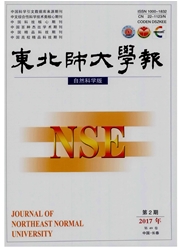

 中文摘要:
中文摘要:
为探讨运动训练改善心衰大鼠室旁核中枢整合作用的机制,以冠脉结扎法诱导大鼠心衰模型,并进行游泳训练.使用室旁核微量注射法,观察了肾交感神经放电活动、动脉血压和心率的变化量;以RT-PCR实验法,观察了室旁核内GABAA受体mRNA表达量的变化.结果显示:运动训练可改善心衰大鼠室旁核GABA。受体介导的交感传出抑制性作用,其机制可能与室旁核内GABAA受体的上调有关.
 英文摘要:
英文摘要:
The goal of this study was to disclose the mechanism of exercise(ExT) in improving GABAA receptor mediated sympathetic outflow within the paraventricular nucleus(PVN) in rats with heart failure. Heart failure(HF) animal model was induced by coronary artery ligation and swimming was conducted. To examine the functional role of γ-aminobutyric acid(GABA) within the PVN,an antagonist of GABAA receptor,bicuculline methiodide,was microinjected into the PVN. Dose-dependent increases in RSNA,arterial blood pressure (BP),and heart rate (HR) were produced in all rats. There was a blunted increase in these parameters in HF rats compared with the sham-operated rats. Howev- er,ExT significantly improved the blunted phemomenon in HF rats. The results of RT-PCR show that GABAA receptor mRNA expression levels in the PVN were also significantly increased in HFExT rats compared with HF-sedentary rats. The results indicate that ExT improves GABAA receptor mediated sympathetic outflow within the paraventricular nucleus in rats with heart failure and the mechanism may be involved in the upregulation of GABAA receptor in PVN.
 同期刊论文项目
同期刊论文项目
 同项目期刊论文
同项目期刊论文
 期刊信息
期刊信息
